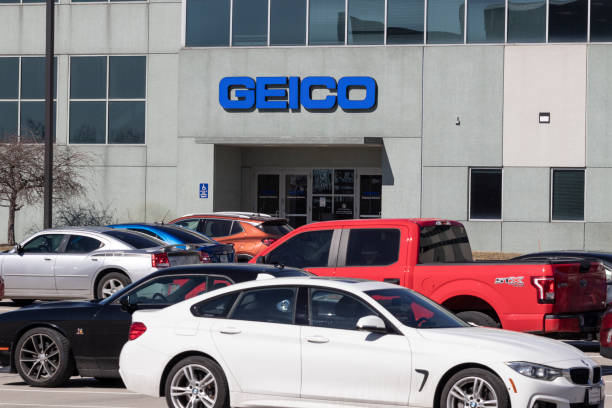If you opt for comprehensive insurance coverage for a car in the US in 2021, statistics tell us that the average you’ll pay is $1,674 for your annual premium or $139.50 per month. That’s a lot of money, especially when the cars themselves are getting more advanced and more expensive.
It’s times like these when you need serious cost-cutting power, and with insurance, you can make those cuts. Insurance is one of those exciting areas of car spending where you can work more actively to cut back, and in today’s blog, we’ll share 10 great ways to do it.
1. Get discounts for multiple cars
For many years, the average number of vehicles per household has hovered between 1.8 and 2, so it’s fair to say that a large number of American families have more than one vehicle at home. For those families operating 2 or more cars, you can get savings of up to 25 percent, depending on which provider you’re using.
According to valuepenguin.com, Geico offers the best potential rates up to 25 percent lower, but State Farm, Progressive, and Travelers also offer discounts.
So if you have 2 or more cars, consolidate them into one insurance policy and build savings everyone can enjoy.
2. Consolidate insurance with a single provider
Your household may not have multiple cars, but it could very well have multiple insurance policies from different providers. Hardly anyone buys all of their insurance at exactly the same time, and everyone is encouraged to shop around for policies (see below), so it’s quite possible one could end up with multiple providers.
If you make a few modifications to your various insurance policies, consolidating your various policies into one deal with one provider, you will almost certainly be offered a better deal.
Never forget that insurance is a cut-throat game; an industry of dogs eating dogs. If the result is getting you more than just car insurance, they’ll be willing to make it worth your while!
3. Track your driving
For several years now, major auto insurers have offered a unique idea to those who want to enjoy some significant discounts on their insurance without investing years of trouble-free driving first: They install a tracking device in their car. In All State, they call it “Drivewise”, and Liberty is called “Safeco”, and so on.
Basically, you agree to have a tracker plugged into the OBD-II port or an app that tracks your driving through your phone, whatever the company uses, and then you just drive as usual. By accepting, you can get discounts, but as the data comes in and you can show your steady hand on the wheel, they will become more generous.
4. Advanced driving courses
If you’re not comfortable with driving trackers, then an alternative method of proving your driving skill and reliability is to take advanced courses in things like defensive driving. Typical discounts range from 5 to 20 percent and are generally eligible for drivers under the age of 25 and drivers over the age of 60, in both cases when the insurance may be disproportionately high depending on the circumstances.
Geico gives the best-known potential discounts to drivers age 50 and older who take defensive driving courses, ranging from 5 percent to 20 percent. This is a great discount method not only because of the financial benefits but also because it makes you a better driver and you will certainly be safer on the road.
5. Compare, compare, compare
Above, we mentioned that people are being told to buy, then we said to consolidate into one vendor. That advice is still true, but it doesn’t mean you can’t shop around that provider just yet. Comparing insurance rates has never been easier thanks to free online platforms like thezebra.com and insurify.com, among others.
It’s not as time-consuming as it used to be, but it can be a bit tiring to print quotes or read the details of different providers. However, it is worth it. This is a service you’ll sign up for year after year, so it’s worth investing some time to find out if the provider is really worth what they quote or not.
6. Improve your car storage
If you are moving house and still looking for a place, try to find a place with a garage. You can get small but helpful discounts of up to 5 percent or so when you can prove to your insurance company that you have a safe place to store your car each night.
If your zip code is a “problem zip code” for the insurer, referring to the zip codes with the highest per capita crime rates, then there’s not much you can do about it unless you leave the entire area, but you can improve your chances if you get a secure lock within that zip code.
7. Pay a higher deductible
The deductible refers to the amount of money that you indicate to the insurer that you are willing to pay in the event of an accident and claim against your policy. Some people put their own deductible as low as possible, which means that if you do have an accident, your insurance will cover more, but it also means your premium will be higher.
For those who have a well-founded belief that they are safe drivers, and are very rarely at risk of accidents, for example, there are hardly any people around where they are driving; don’t drive very often, etc., then they might offer a higher deductible for a lower premium. If the risk of claims is low, it is worth making that small bet.
8. Work on your credit score
Like so many things in normal life, your credit score has a serious impact on your car insurance. The basic rule of thumb when it comes to insurance providers is that if you have a low credit score, then you are more of a liability and therefore your annual premium will be higher.
According to the credit rating agency Experian, “many auto insurance companies use a credit-based auto insurance score to help them decide whether to hire you as a policyholder, as well as the premium you’ll pay if they do.”
It is not in all states, as it happens. California, Hawaii, Massachusetts, and Michigan limit or prohibit the use of credit data to determine insurance premiums. In most places, however, you can expect some impact. The difference can also be huge. On the same vehicle, someone with a “Very Good” credit rating could receive $1,508, while someone with a “Bad” rating could receive $2,940.
9. Increase your anti-theft security
If you currently have or plan to get comprehensive insurance on your vehicle, ensuring you have a high-end alarm system can be a great way to lower your premiums. The reason for this is that comprehensive insurance covers theft, while liability-only insurance and other more limited forms do not. Upgrading your existing security with a mechanical immobilizer, wheel locks, and tracking devices can result in savings of up to 10 percent, depending on the provider.
It should be noted, however, that for some it would be a counterproductive discount, firstly because you have to opt for more expensive comprehensive coverage in the first place to qualify for it, and secondly because you may also have to spend money buying upgrades for your car if you don’t already have them.
10. Drop coverage or get liability only
Finally, to lower your auto insurance costs, you can take some time to review your policy summary and determine whether or not you have an insurance package that you really need. It could be that you have a policy where you are paying more for roadside assistance, courtesy car provision, and other protections that sound good but don’t really provide you with any real value or safety net.
A good example of this can be seen in auto insurance policies with comprehensive coverage for a vehicle that is already 10 years old and past its prime. Why bother paying for so much insurance when the total cost of the policy represents a significantly higher percentage of the total value of the vehicle? Consider trimming the fat off your policy. Better yet, for older cars, stick with liability insurance. You can keep a lower deductible and still get cheaper insurance overall.



